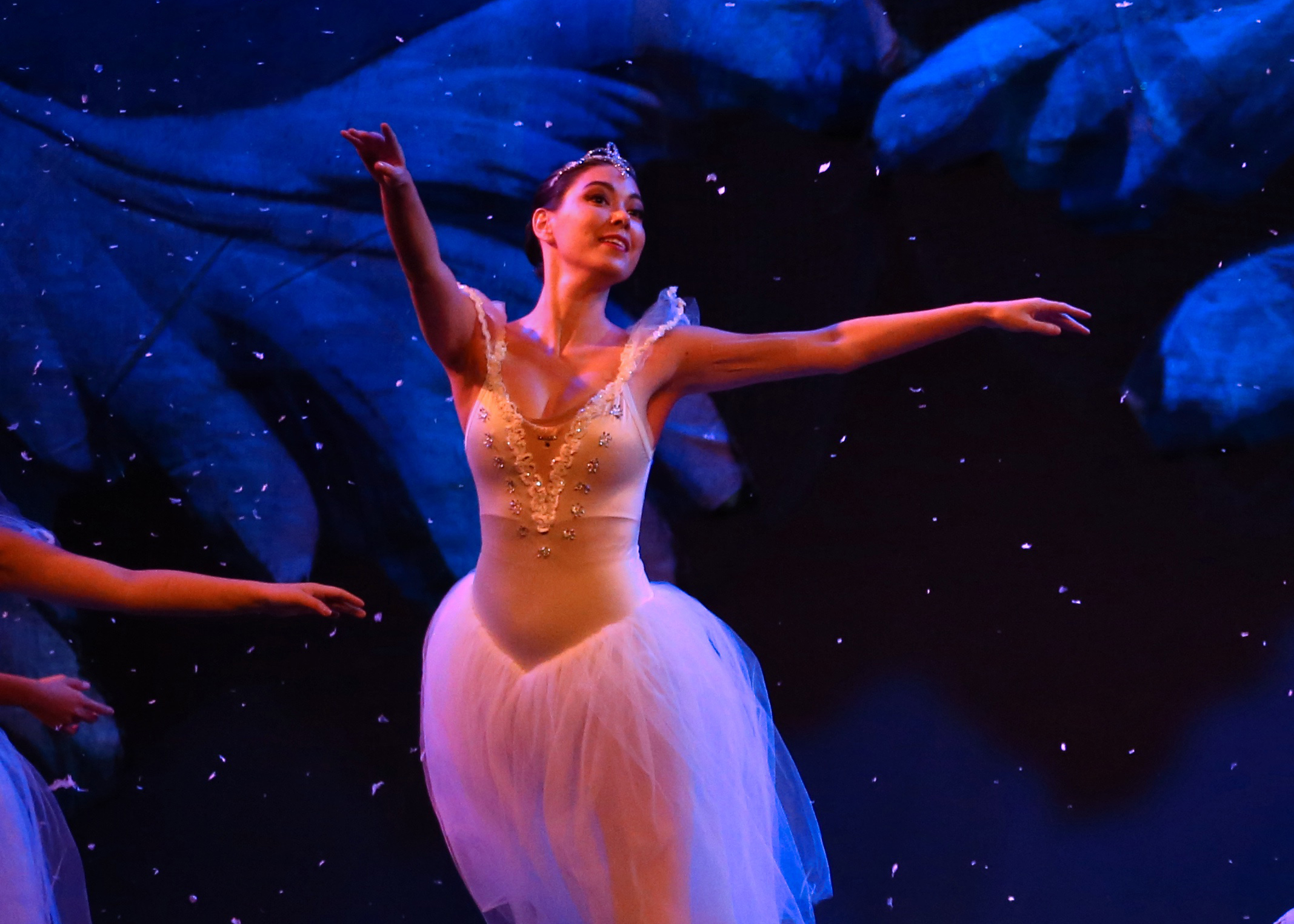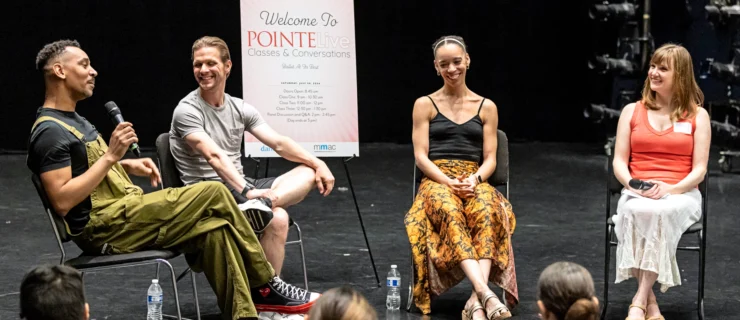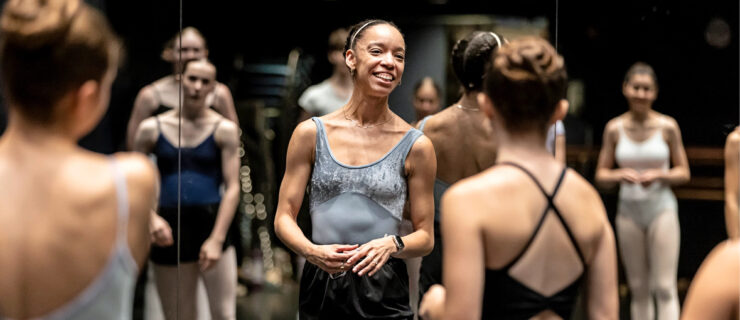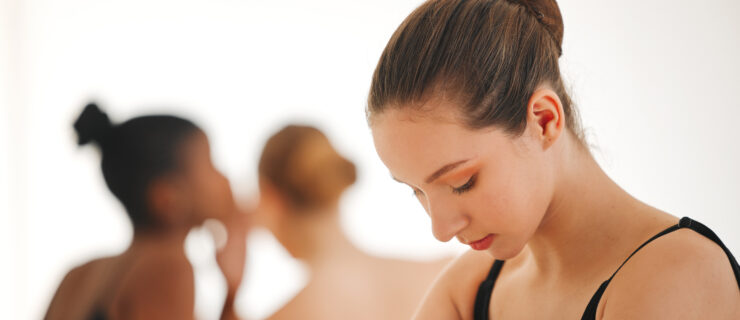Tips for Adult Ballet Students Preparing for Performances
Preparing for Nutcracker season is always an exhilarating rush—and not just for ballet students and professionals. In local productions from Berkeley to Houston to New York City, many adult recreational dancers take on roles in the holiday classic too. When you’re a pre-professional dancer or company member, you’ve likely had years to perfect your pre-performance routine. But for adult students dancing in rigorous corps roles like Snowflakes, prepping for shows can be an adventure in multitasking. There are jobs, families and rehearsals to juggle, as well as making sure you’re taking care of your physical and mental self along the way. Whew!
For Katherine Nobles, a 36-year-old mom of four and a full-time dental hygienist in North Carolina, being cast as a Snowflake and as Clara’s mom in Charlotte Youth Ballet’s annual performance was a thrill. But it was also a huge undertaking, with class four to five days a week, and rehearsals on the weekends. It’s a lot to handle at one time, but Nobles, who danced Nutcracker as a teenager, says it’s well worth it.
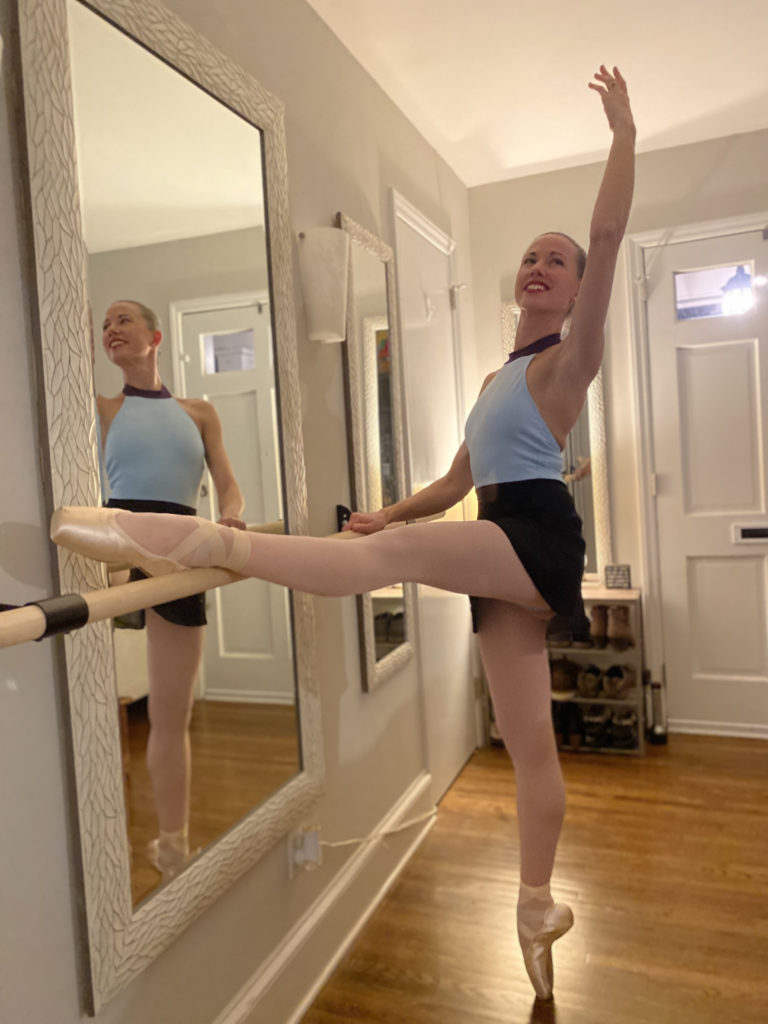
“It’s definitely been challenging,” she says with a laugh, “but I appreciate the directors because they have been really helpful in giving corrections.”
She credits a super-supportive family with helping get through the rehearsals and multiple classes. In CYB’s version of the ballet, 16 Snowflakes take the stage. Nobles says the hardest part is the pace—the different formations where you’re entering and exiting in a different spot each time.
To prepare, she’s taking extra care with her body outside the studio, with yoga and running. She also swears by chiropractic care and a very no-frills home rehab program. “I try to do a lot of things that dancers do as far as using a foam roller, and I ice my ankles at night as a preventative. I’m trying to be very careful, and I’m very mindful.”
Preparing and Caring for Your Body
Mindfulness like Nobles’ is key for adults who may not be used to shuffling multiple classes and rehearsals in an already packed holiday season. Melissa Buffer, a physical therapist and founder of Buffer Trenouth Physical Therapy and Wellness in Boston, says adult students tend to have more day-to-day responsibilities than their younger Nutcracker castmates. That can make it tough to fit in everything that goes with preparing for a major production, beyond rehearsals.
“Cross-training, conditioning, meal planning and many other aspects should fit into a dancer’s toolbox, particularly when preparing for performance mode,” says Buffer.
Post-rehearsal aftercare is also essential. Buffer adds that self-massage, stretching and, even, meditating all require time and attention. “When that time is not provided, the body may not be able to heal as well as it could.”
So, how should adult students be prepping in the weeks before the curtain rising? Buffer says a focus on body-weight conditioning, core-focused strength, and exercises that help to build endurance is key. She recommends six straightforward ones: the squat, reverse lunge, dead lift, push-ups, planks and single-leg heel raises. Perform each for one minute, with a 30-second rest in between each exercise (or 45 seconds on, 45 seconds off if you’re new to strength training). Buffer demonstrates the moves below.
And while non-ballet exercise is important, she emphasizes that your cross-training routine must be flexible. For instance, dancers should scale back as they get into performance mode, with a bigger emphasis on recovery. “The time leading up to performances shouldn’t be about pushing the training, but focusing on efficiency, incorporating breath and overall recovery.”
Make Time to Eat Right
But all of the extra body-centric work is nothing if a dancer isn’t loading up on the proper fuel.
Buffer cautions that less-than-optimal nutrition or skipping meals could be a perfect recipe for injuries. “When our muscles do not have the right balance of electrolytes, cramping could happen,” she says. “Preparation is key.” She recommends setting aside an hour or so each week to prepare nutritious meals and snacks ahead of time.
Alexandra Langley, a 40-year-old dance student performing with Hawaii State Ballet, says she tries to make good choices when it comes to food. But she also realizes that a hectic work schedule doesn’t always allow for home-cooked meals, and that’s okay. “I think during Nutcracker, I just have to eat,” she says with a chuckle. “If that means I have to order delivery or get takeout, that’s just what I have to do.” Her favorites include poke bowls and other quick meals with a good protein/rice combination.
In between thoughtful training and healthy snacking, these dancers are truly savoring the moment. Nobles first danced as a Snowflake 19 years ago; now she brings an entirely fresh perspective to performing.
“As a teenager, I had a teenager’s perspective. Now I just enjoy the process so much more. I’ve really had a blast.”
